 If you have ever been to Europe, most likely, you also visited a hundreds of years old castle dating back to the Middle Ages. All those turrets and high walls took your breath away and, duly impressed, you retired for some refreshments to the local pub down Castle Street. As you were writing your postcards and chatting away with your fellow tourists about the magnificence of the ancient architecture, little did you know you were, in fact, sitting under the roof of one! That’s right – the history of timber framing and that local pub goes back hundreds of years as well and tells the tale of the local history. In fact, these buildings might be just as old as the nearby castles and churches, but instead of dominating the landscape, they mold into it. Even though their roofs might have burned down in constant skirmishes between feudal overlords, or their walls destroyed in an explosion during one of the World Wars, their joints were hand carved and fitted to last.
If you have ever been to Europe, most likely, you also visited a hundreds of years old castle dating back to the Middle Ages. All those turrets and high walls took your breath away and, duly impressed, you retired for some refreshments to the local pub down Castle Street. As you were writing your postcards and chatting away with your fellow tourists about the magnificence of the ancient architecture, little did you know you were, in fact, sitting under the roof of one! That’s right – the history of timber framing and that local pub goes back hundreds of years as well and tells the tale of the local history. In fact, these buildings might be just as old as the nearby castles and churches, but instead of dominating the landscape, they mold into it. Even though their roofs might have burned down in constant skirmishes between feudal overlords, or their walls destroyed in an explosion during one of the World Wars, their joints were hand carved and fitted to last.
Of course, Europe is only one of the places where timber frame construction goes back centuries. Unsurprisingly, only certain parts of the world with large and readily available forests were able to sustain a well-developed timber

frame tradition. Deserts, the tundra or the high Arctic were areas where trees were rare and not log quality, therefore, timber frame or log construction was simply not possible. Of course, there were many areas of the world besides Europe where vast areas of forest-covered lands offered excellent quality timber for construction. For instance, Jokhang Monastery in Lhasa, Tibet, is believed to be the oldest timber frame construction in the world dating back to the 7th century. Not to mention the classic Japanese timber framing marvel, the pagoda roof. Before we venture off to delve into the historic buildings Asian and American timber framing produced, let us take a closer look at the various styles still standing in Europe.
German Tradition
Where else can you go on a vacation centered on timber frame buildings but Germany? The three thousand kilometers long timber frame road lengthwise crisscrossing the middle of Germany connects the quaint medieval timber frame towns of Bavaria and Baden-Württemberg with the eclectic coastal regions along the North Sea shore. You will see seven distinct varieties of timber frame styles, corresponding with the seven segments of the road, along your journey spanning hundreds of years from the early 1300s to late 19th century. As you begin your trip in the south of the country, you will encounter Lower German timber frame buildings with large spaces on the ground floors that are divided up into three separate sections including storage, a large hall and bedrooms. This style  worked well for the predominantly agricultural communities spreading across the fertile lands of lower Germany and as far south as Switzerland. Farther north you will see the architectural style change to well-preserved timber frame and half-timbered houses that are representative of the Central German tradition. A narrower footprint accommodates a structured framework with a front room facing the streets and the kitchen and bedrooms in the back. These multileveled constructions fit well with the mountainous terrain and, over the years, developed a particular high gabled look that prominently features in many tourists’ romantic fantasies of Germany. Finally, as you are getting closer to the north of the country, you are entering a region traditionally dominated by the closeness of the sea and the wealth maritime trading produced over the centuries. The Upper German timber frame style offers the most variety of buildings often differing from town to town. This variety is largely due to the availability of material as well as the distinctive building method craftsmen applied in the early Middle Ages involving double framed beams and posts set wide apart.
worked well for the predominantly agricultural communities spreading across the fertile lands of lower Germany and as far south as Switzerland. Farther north you will see the architectural style change to well-preserved timber frame and half-timbered houses that are representative of the Central German tradition. A narrower footprint accommodates a structured framework with a front room facing the streets and the kitchen and bedrooms in the back. These multileveled constructions fit well with the mountainous terrain and, over the years, developed a particular high gabled look that prominently features in many tourists’ romantic fantasies of Germany. Finally, as you are getting closer to the north of the country, you are entering a region traditionally dominated by the closeness of the sea and the wealth maritime trading produced over the centuries. The Upper German timber frame style offers the most variety of buildings often differing from town to town. This variety is largely due to the availability of material as well as the distinctive building method craftsmen applied in the early Middle Ages involving double framed beams and posts set wide apart.
British Isles
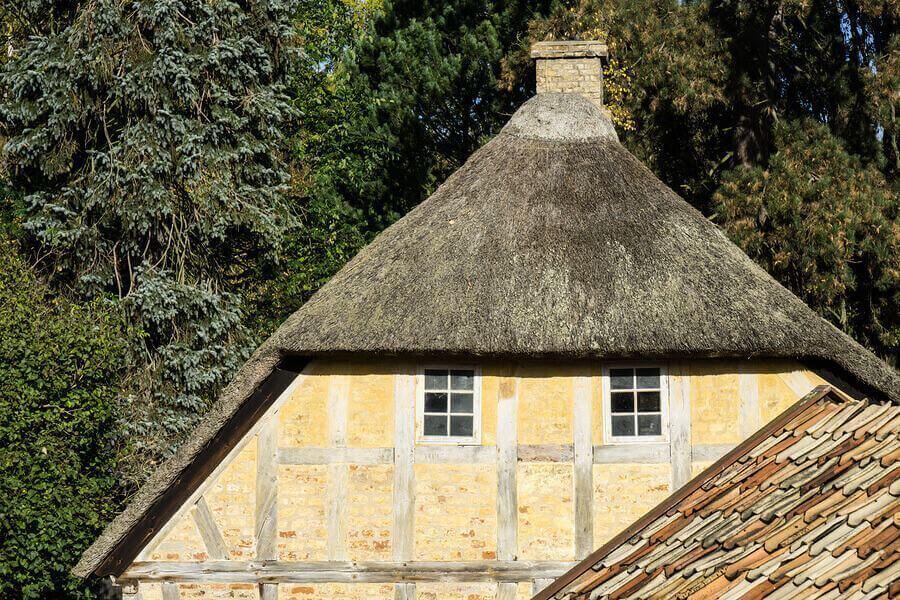 England and Scotland have a long-standing tradition of using timber as one of the main building materials. York’s classic shopping street, The Shambles, conjures up images of early medieval times with its jettied upper levels protruding from main buildings and partially covering the walkways below. The classic style of timber frame architecture of the Tudor era in the 15th and 16th century is clearly visible in small towns in the countryside just as much as in the busy streets of London and other large cities. As deforestation become an obvious problem in the British Isles, using shorter beams and posts gradually became the norm in timber constructions. While many timber frame and half-timbered buildings acquired a new façade in the 18th and 19th centuries’ modernization efforts, the basic material filling out the space between the wooden posts often remained the same: wattle and daub. In early timber frame construction, as well as a more affordable alternative to bricks, wattle and daub filling consisted of a lattice of thin wooden strips or sticks that were covered with a sticky mixture of clay, soil, and sand that hardened to a durable filling. It would be hard to find a more prominent example of Tudor half-timbered architecture than Little Moreton Hall in Cheshire. This enchanting early 16th-century manor house features classic medieval design elements such as herringbone patterning, oak beams, Elizabethan fireplaces, wood paneled galleries as well as chevron and lozenge patterns encircling the outer walls. In contrast, traders and wealthier commoners built Wealden hall house type buildings, popular in the southeast of England, with more functionality in mind. With thatched roof and the two main halls situated on either side of the hearth, these multilevel constructions often included jettied upper levels to accommodate extensive family life. The Old Punch Bowl in West Sussex from the early 1400s is a typical example with a tumultuous history.
England and Scotland have a long-standing tradition of using timber as one of the main building materials. York’s classic shopping street, The Shambles, conjures up images of early medieval times with its jettied upper levels protruding from main buildings and partially covering the walkways below. The classic style of timber frame architecture of the Tudor era in the 15th and 16th century is clearly visible in small towns in the countryside just as much as in the busy streets of London and other large cities. As deforestation become an obvious problem in the British Isles, using shorter beams and posts gradually became the norm in timber constructions. While many timber frame and half-timbered buildings acquired a new façade in the 18th and 19th centuries’ modernization efforts, the basic material filling out the space between the wooden posts often remained the same: wattle and daub. In early timber frame construction, as well as a more affordable alternative to bricks, wattle and daub filling consisted of a lattice of thin wooden strips or sticks that were covered with a sticky mixture of clay, soil, and sand that hardened to a durable filling. It would be hard to find a more prominent example of Tudor half-timbered architecture than Little Moreton Hall in Cheshire. This enchanting early 16th-century manor house features classic medieval design elements such as herringbone patterning, oak beams, Elizabethan fireplaces, wood paneled galleries as well as chevron and lozenge patterns encircling the outer walls. In contrast, traders and wealthier commoners built Wealden hall house type buildings, popular in the southeast of England, with more functionality in mind. With thatched roof and the two main halls situated on either side of the hearth, these multilevel constructions often included jettied upper levels to accommodate extensive family life. The Old Punch Bowl in West Sussex from the early 1400s is a typical example with a tumultuous history.
Francophone Regions
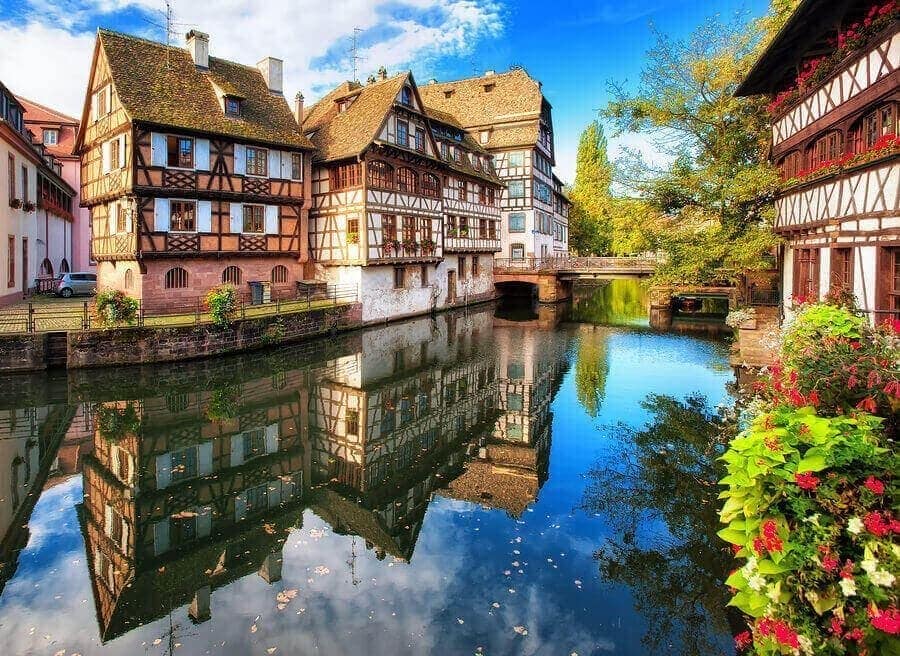
Timber framing and half-timbered constructions are popular in most areas of France and the surrounding regions. In Normandy, timber framing has a long standing history. The capital city of the region, Rouen, features a variety of styles from different historical periods spanning over seven hundred years. From simple frames to elaborate woodworking decorations, the city provides a glimpse back to the Middle Ages. Over the years craftsmen used two major techniques: with the post-in-ground approach, they buried the posts directly into the ground, while with the post-on-sill technique they placed the posts on a beam laid on the ground. Full timber constructions meant increased fire hazard for most medieval cities and the practice of mixing timber framing with stones and composite wall fillers became widespread. In the southern parts of France, half-timbered constructions became a staple of Basque architecture in the 15th century. Although most builders opted for stone
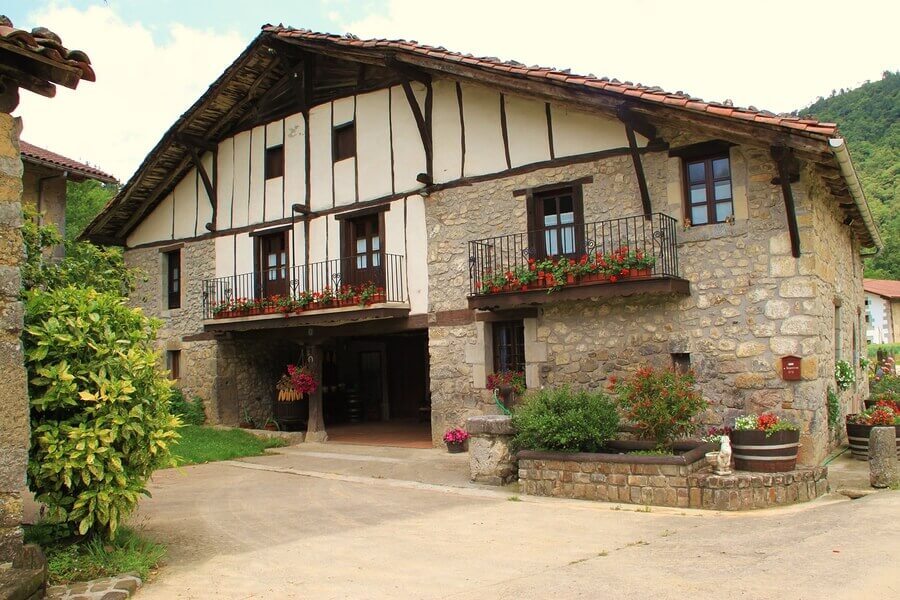
and brick for the construction of the first floors, money often ran out along the way and timber was an acceptable option to adding a second level. Jettied overhangs and second story extensions are commonplace in this region as well as colorful paints of dark red and blue. Baserri is the traditional Basque half-timbered style of building recognizable by its moderately pitched roofs and generous sizes designed to accommodate extended families. Indeed, the Baserri was a central part of Basque culture symbolizing families within settlements both in northern Spain and southern France.
Scandinavian Tradition
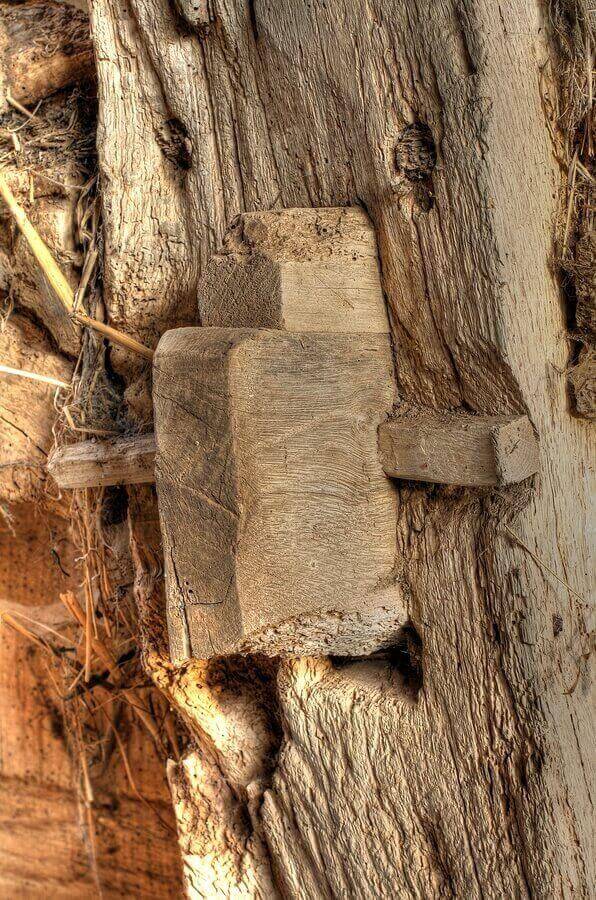
The popularity of timber frame building and half-timbered construction methods spread to the northern regions of Europe from the center of the continent in the early Middle Ages. The ability to use various lengths of timber for construction of a frame that builders could fill out with other materials made this technique a particular favorite with inhabitants of northern climates, where sufficient quantity and quality timber was often hard to come by. One of the most widespread and well-known forms of Scandinavian timber framing is the stave construction. In particular, Sweden’s and Norway’s stave churches are renowned examples of the Scandinavian woodworking tradition, although they do exist outside of the region as for instance in Poland and Germany as well. The majority of stave churches date back to the 12th and 13th century and their name comes from the Old Norse word stafr, which is the name of the posts constructed to distribute the weight of the building. These early Christian churches were built with the technique of placing the wooden structure on a stone foundation. The four corner beams created a space that builders filled in with tongue and groove style wooden planks. As the parts fitted into each other through connecting grooves, the entire building locked the beams in place for a sturdy construction. Naturally, stave churches are only one kind of timber frame styles within the Scandinavian tradition. Another type of plank house called bole or Skiftesverk was mainly used for barns, homes, and farm buildings, whereas half-timbered construction dominated architectural styles well into the 1800s. Finally, the early windmills in the Netherlands are prime examples of timber frame buildings and they also actively helped in establishing the widespread practice of using timber logs for construction with their ability to efficiently saw through large logs.
Asia
Post and lintel construction using various materials, including timber, has been one of the oldest methods of creating a framed opening. Many of these constructions have been exceptionally well preserved in different parts of Asia, providing a glimpse into the ingenuity of timber framing. Even today, the classic Chinese gates we learned to associate with Chinatowns of major cities in the west are magnificent, yet simple forms of post and beam engineering: two beams planted in the ground holding up a horizontal sill connecting the posts to frame a portal. In fact, the main difference between traditional Asian construction and western construction methods is in the conceptualization of the wall. While western architecture used walls as load bearing parts of a building, the Asian tradition perceived walls as spatial demarcations that simply filled in the area between structural beams. You can easily see this concept at work when considering the classic Japanese shoji sliding doors and rice paper walls. Asian joinery also developed a high degree of specialization as diagonal braces were very rarely used as support structures. Naturally, different regions across the continent developed their own architectural style and methods of construction.
The previously mentioned Jokhang monastery complex in Tibet is only one part of the versatile Asian tradition. In fact, Jokhang itself bears evidence of Indian, Chinese, and Nepalese design influences. Many other rural monasteries, such as the Ragya monastery from the early 1700s, followed similar construction techniques that incorporated mortise and tenon joinery with elaborate bracing and intricate post carvings throughout the building complex.
Chinese craftsmen even developed a specific interlocking wooden bracket system that made it possible to securely join rafters to building posts without fasteners. These dougong brackets became particularly popular in the 6th and 5th centuries BC. Over the centuries, Chinese builders developed the dougong into one of the main support systems that allowed them to create reliable constructions that were able to cope with forces challenging structural integrity, such as earthquakes. Over time, brackets acquired decorative elements that were emphasized with the use of bright paints and stylized artistry.
 Pagodas, these several levels high ornately decorated wooden structures, most commonly conjure up images of the Japanese countryside, even though they are also common in other Asian countries such as India, China, Nepal, Burma or Vietnam. Craftsmen used amazing accuracy to create all the details of a pagoda that not merely towers over the surrounding landscape but also showcases exquisite artistic creativity, which successfully combines superb architectural function with style in a pleasing aesthetic package. In fact, these wooden structures were particularly well suited for the earthquake-prone Japanese landscape that was regularly battered by typhoons and extreme weather. The suppleness of the timber and the flexibility of the joinery allowed structural adjustment with minimal damage to the wooden frame, and many pagodas were able to survive six, seven, and even as much as, fourteen centuries.
Pagodas, these several levels high ornately decorated wooden structures, most commonly conjure up images of the Japanese countryside, even though they are also common in other Asian countries such as India, China, Nepal, Burma or Vietnam. Craftsmen used amazing accuracy to create all the details of a pagoda that not merely towers over the surrounding landscape but also showcases exquisite artistic creativity, which successfully combines superb architectural function with style in a pleasing aesthetic package. In fact, these wooden structures were particularly well suited for the earthquake-prone Japanese landscape that was regularly battered by typhoons and extreme weather. The suppleness of the timber and the flexibility of the joinery allowed structural adjustment with minimal damage to the wooden frame, and many pagodas were able to survive six, seven, and even as much as, fourteen centuries.
North America
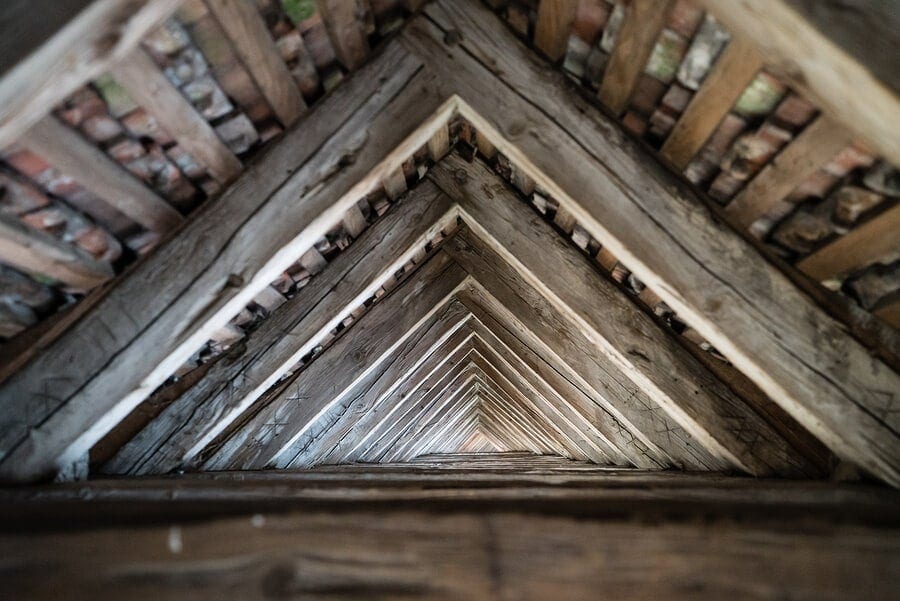 Not surprisingly, timber framing in North America was one of the first types of construction methods European colonists used to build permanent structures. Good quality and abundant quantities of wood made it possible to fill colonial settlements with timber framed houses and barns that also used planks to fill in the wall space. Similarly to the Scandinavian tradition, as well as to French timber framing methods, placing planks of wood into grooves of the corner poles allowed newcomers to create sturdy and versatile structures. In the New World, this type of timber framing took on many forms and names, one of which was the Hudson Bay style, as the trading company favored this type of plank construction for its trading posts. The best-preserved example of this type of construction is the Golden Plough Tavern in Pennsylvania. Built in 1741, the house shows well the combination of two styles with the use of planks below and the half-timbered second floor above.
Not surprisingly, timber framing in North America was one of the first types of construction methods European colonists used to build permanent structures. Good quality and abundant quantities of wood made it possible to fill colonial settlements with timber framed houses and barns that also used planks to fill in the wall space. Similarly to the Scandinavian tradition, as well as to French timber framing methods, placing planks of wood into grooves of the corner poles allowed newcomers to create sturdy and versatile structures. In the New World, this type of timber framing took on many forms and names, one of which was the Hudson Bay style, as the trading company favored this type of plank construction for its trading posts. The best-preserved example of this type of construction is the Golden Plough Tavern in Pennsylvania. Built in 1741, the house shows well the combination of two styles with the use of planks below and the half-timbered second floor above.
Half-timbered construction became particularly preferred in areas settled by German immigrants who brought their craftsmanship and knowledge of wooden engineering with them from the old country. Even today, timber frame barns and halls are one of the best-known trademarks of Amish carpentry. In the North American colonies, the most popular choice for timber beams was oak with the occasional addition of white pine or poplar. Interestingly, many early colonial builders simply did not have the time to season their timber and opted for installing their beams green. This was the case with the oldest 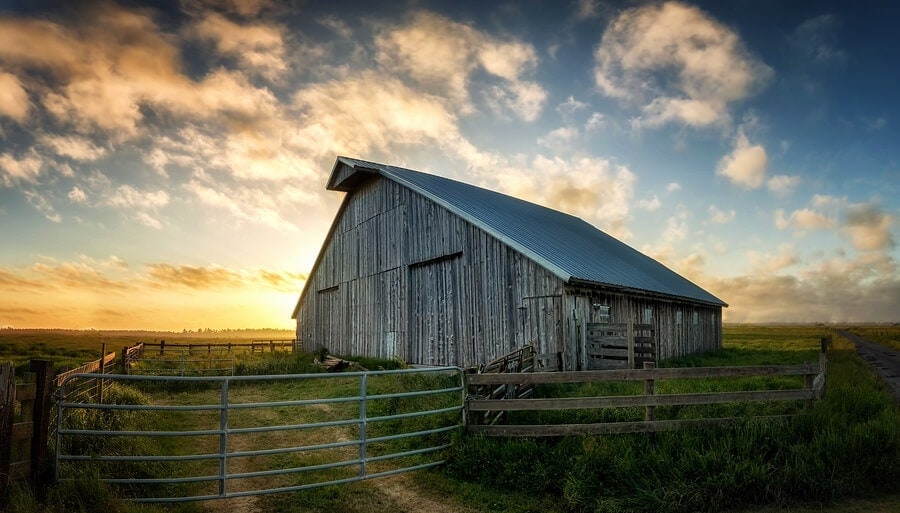 known timber frame structure on the North American continent, the Fairbanks House. Dating back to 1637, the expansive Fairbanks House homestead still stands in Dedham, Massachusetts with clapboard siding and many of its original features intact. Similarly, the Loomis Homestead in Windsor, Connecticut from 1638 preserved many characteristics of colonial timber framing history.
known timber frame structure on the North American continent, the Fairbanks House. Dating back to 1637, the expansive Fairbanks House homestead still stands in Dedham, Massachusetts with clapboard siding and many of its original features intact. Similarly, the Loomis Homestead in Windsor, Connecticut from 1638 preserved many characteristics of colonial timber framing history.
Often, it is difficult to recognize historical timber frame construction as their façades have changed many times over the centuries. Subsequent owners covered up the timber with clapboards or siding to make their home fit better with the dominant architectural styles of their times. Nevertheless, some structures remained the same. Barns, for instance, benefited greatly from the spacious interiors timber framing was able to provide and for this reason, timber frame barns, which started out as the Dutch barn tradition in North America, have remained in use well after the industrial production of nails and screws that made the popularity of timber frame structures decline.